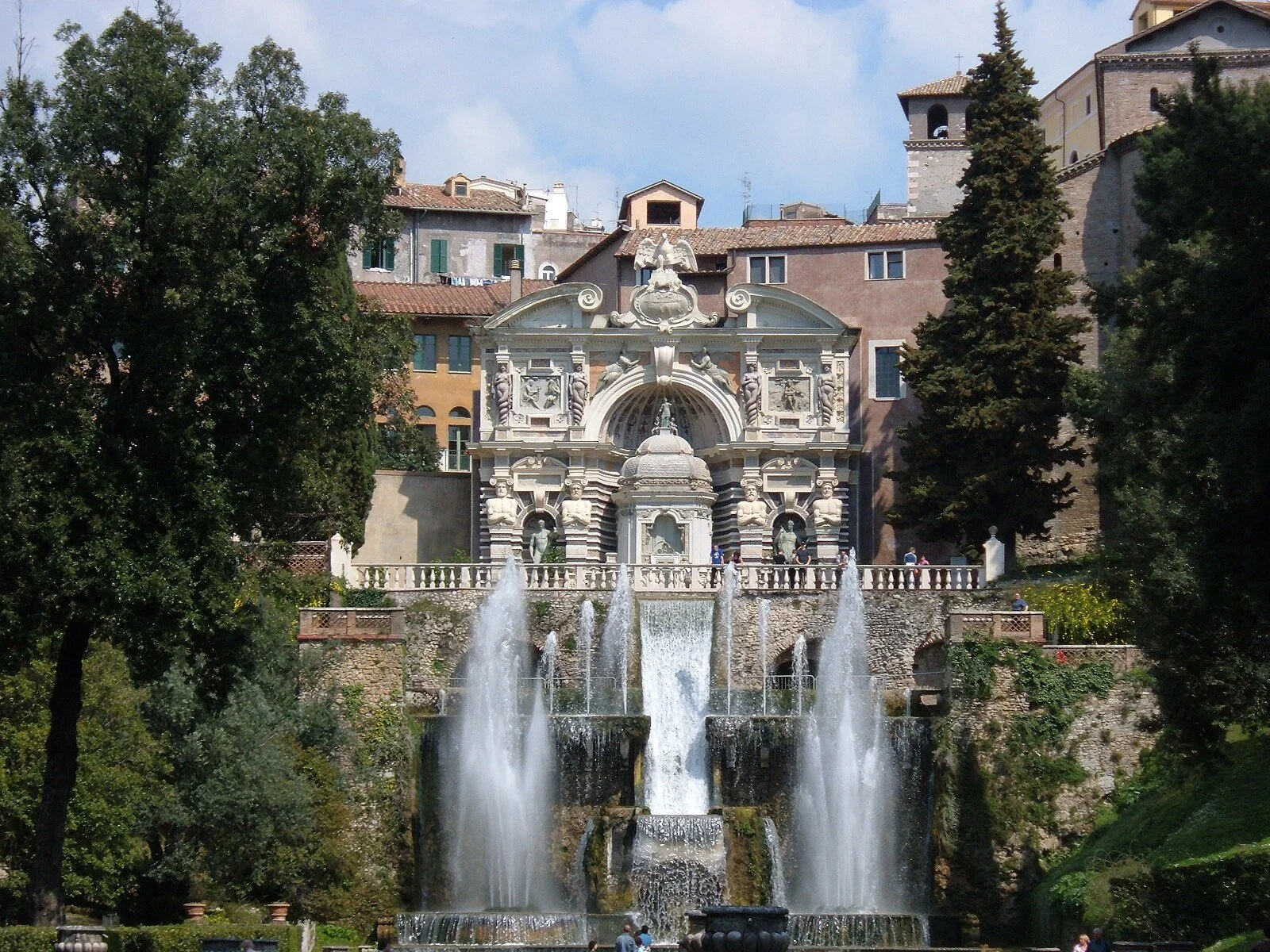The Actual Villa d’Este
From left to right: The Fountains of the Villa d’Este. The Neptune Fountain; the Rometta Fountain; the Hundred Fountains; the Oval Fountain
With Liszt having written such a superb work about the fountains at Villa d’Este, I thought it important to look at the fountains themselves, in order to find out more about why they proved such a source of inspiration.
The building and planning of the Villa d’Este had connections to any number of famous people and families, most notably Cardinal Ippolito d’Este, the second son of Alfonso d’Este, the Duke of Ferrara, through his mother Lucrezia Borgia. With family roots going all the way back to the fourteenth century, the Borgias had been major patrons of the arts, and also humanist scholars of the Renaissance.
Although the land for the villa was acquired in 1550, construction did not begin until July of 1560, when more land was acquired, involving the demolition of houses, public buildings and roads. The creation of the fountains required that the river Aniene located nearby, be diverted in order to accommodate the complex systems of water jets, channels, fountains, cascades and water games.
While the villa itself became famous in its own right, even today it is most celebrated because of its system of fountains. There are fifty-one fountains and nymphaeums, 398 spouts, 364 water jets, 64 waterfalls, and 220 basins, fed by 875 meters of canals, channels and cascades, and all working entirely by the force of gravity, without pumps.
For me, it is no surprise that the combination of religion, history, architecture, engineering, and even fantasy was enough for Liszt to want to write a composition about the fountains of this marvelous villa. While one can find a few other compositions dedicated to the Villa d’Este as well as works about water such as Ravel’s Jeux d’eau and Debussy’s La cathédrale engloutie (The Sunken Cathedral), Liszt continues to stand alone in terms of classical composers celebrating this magnificent place.
Tap an icon below to share this blog on social media, email, or your favorite messaging app.




